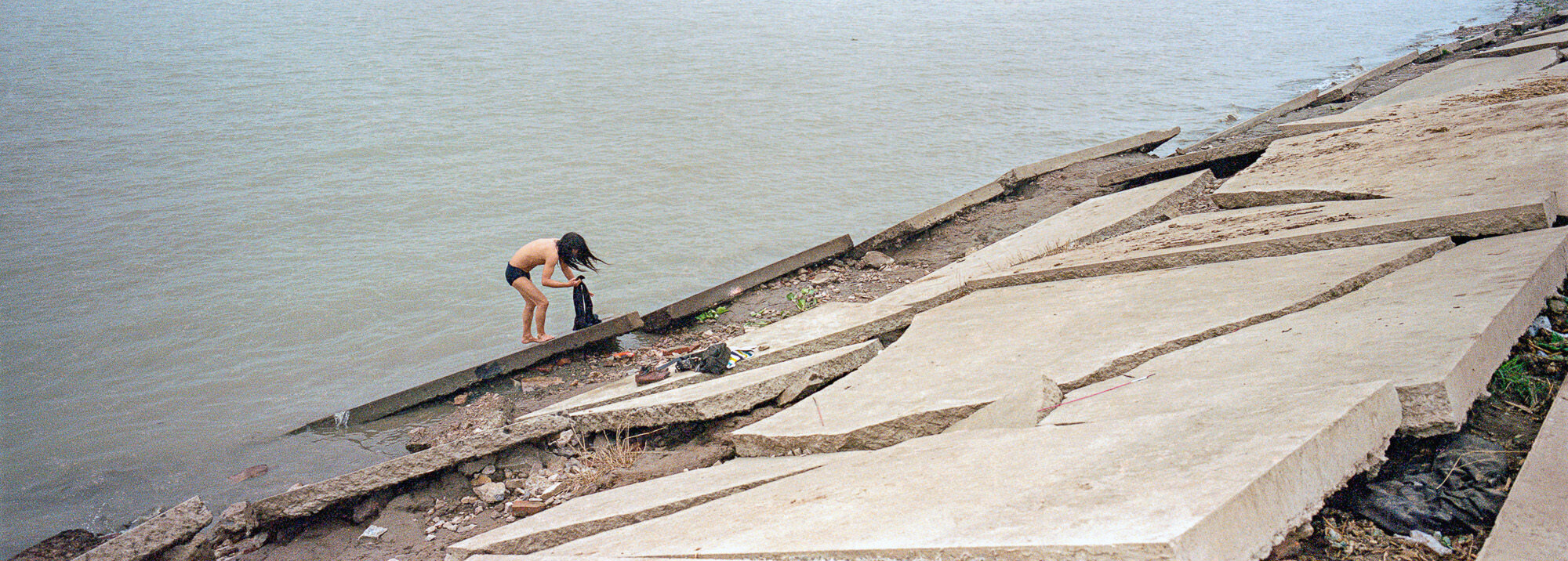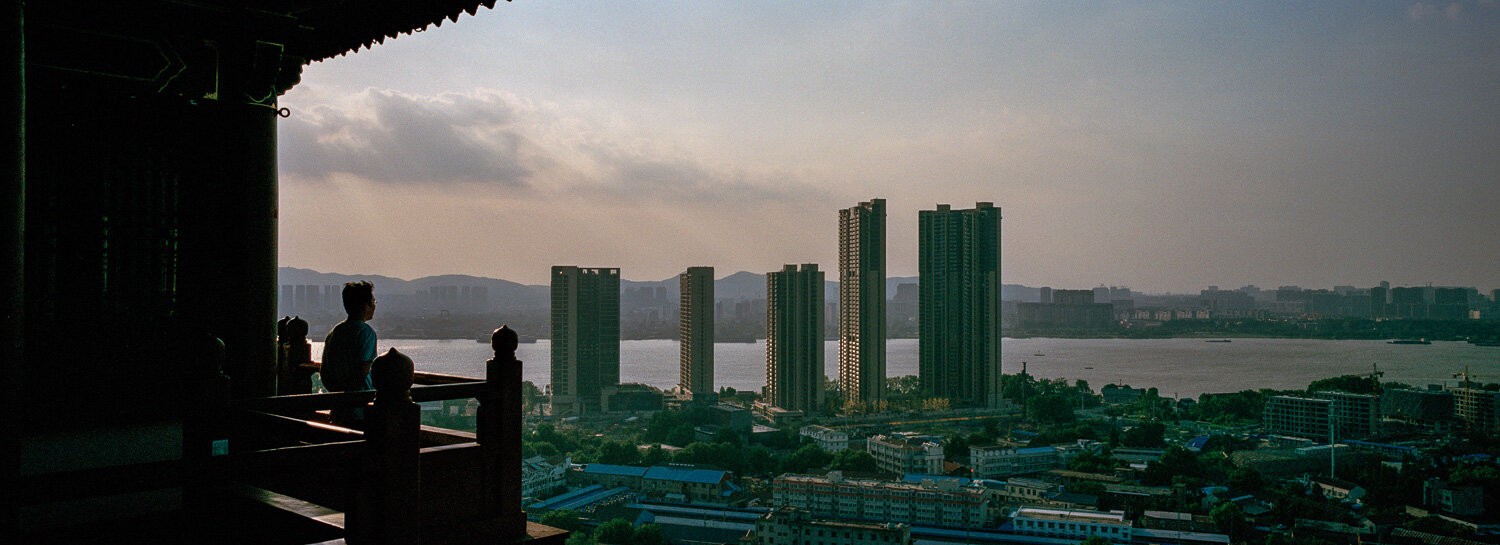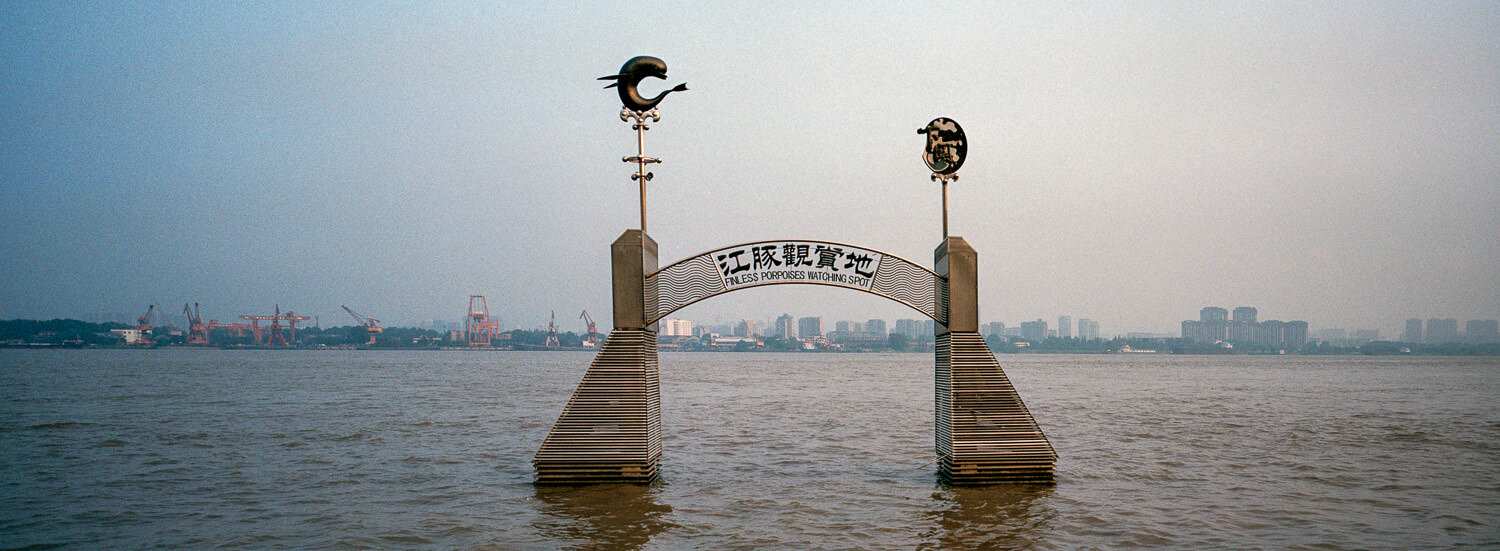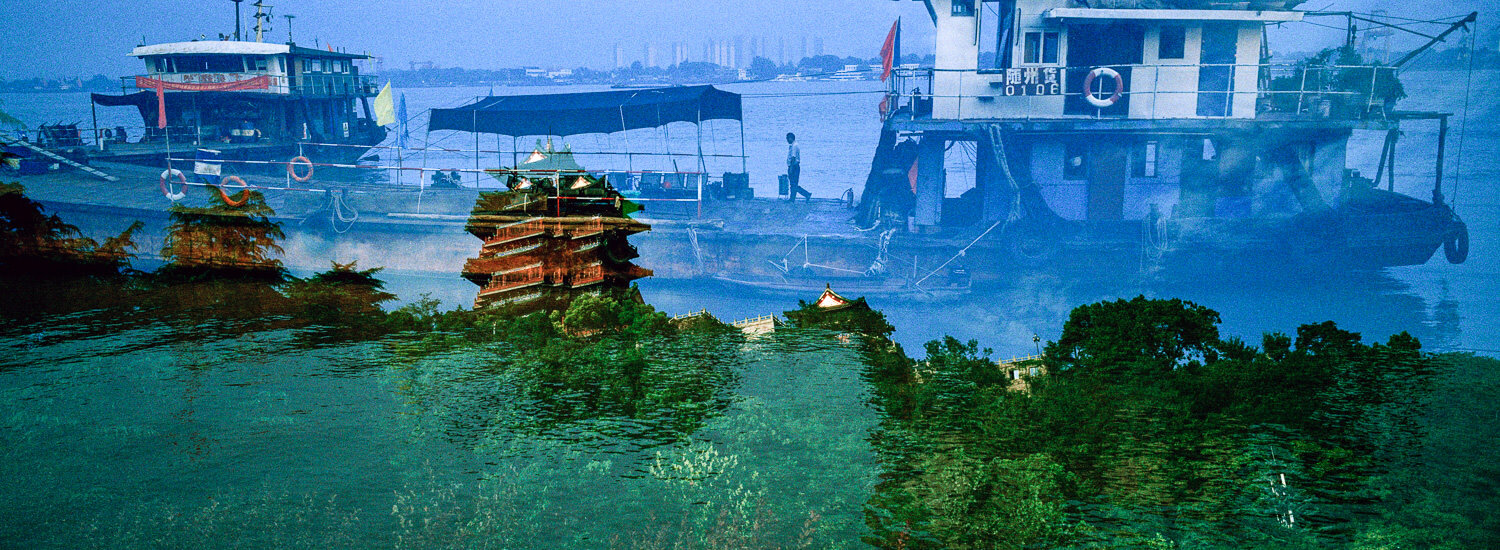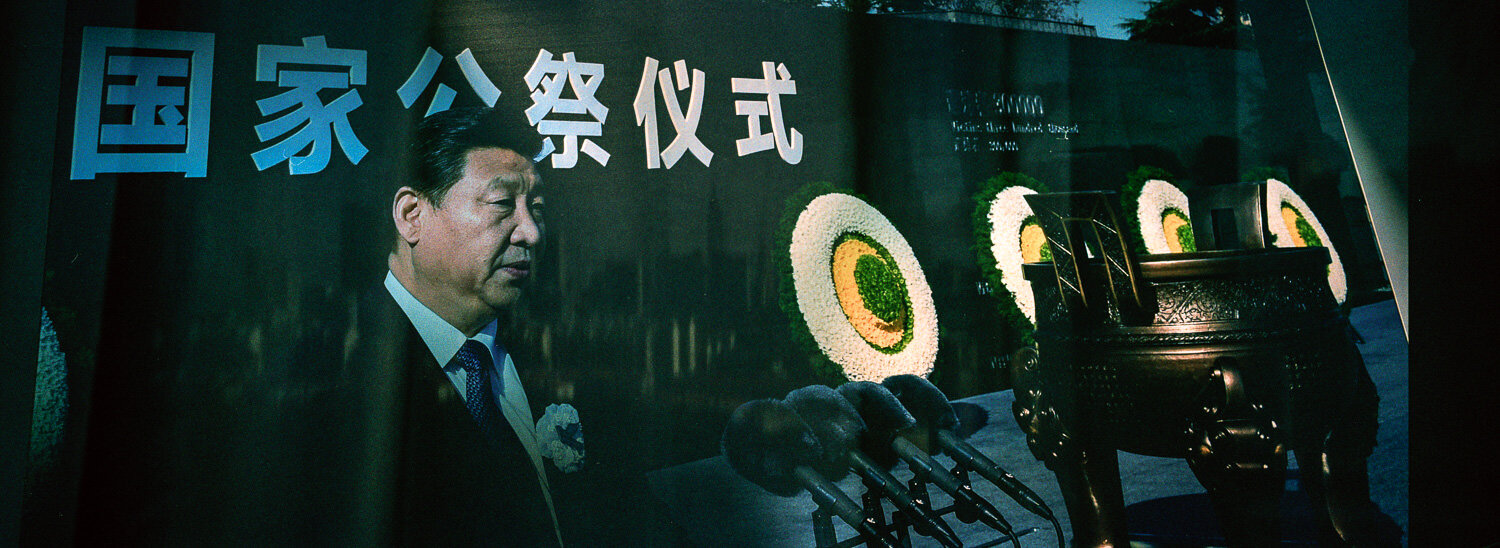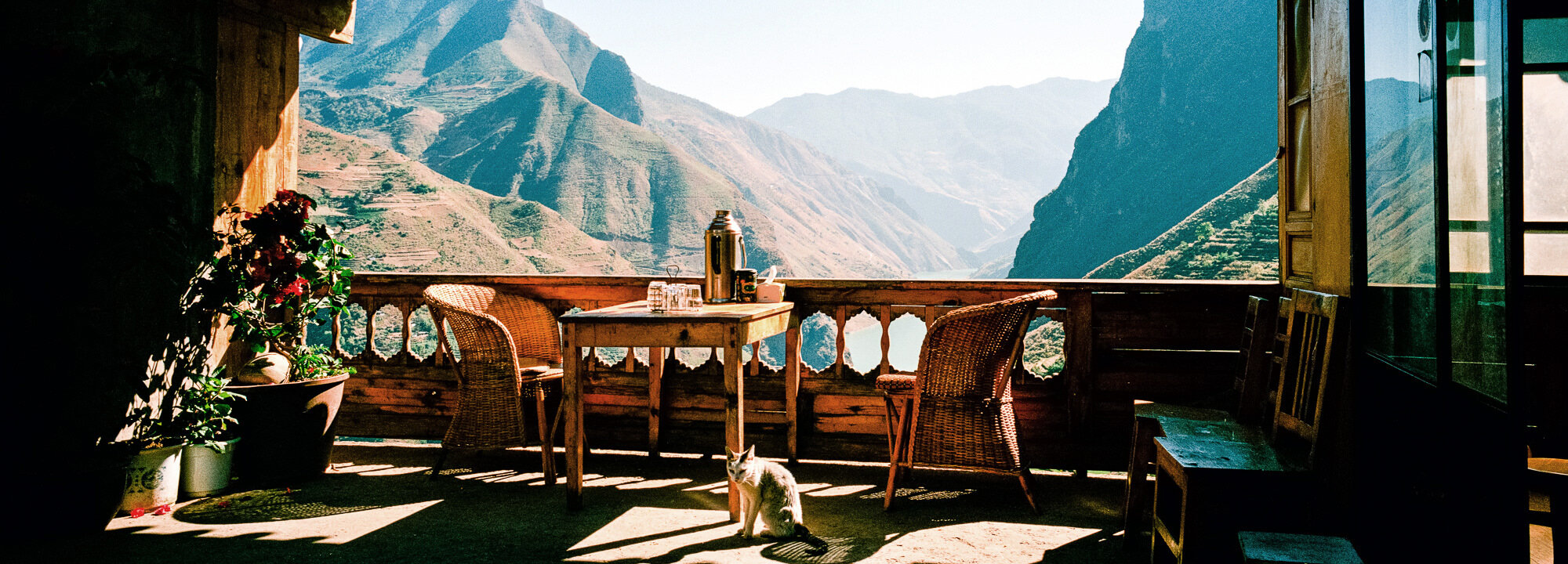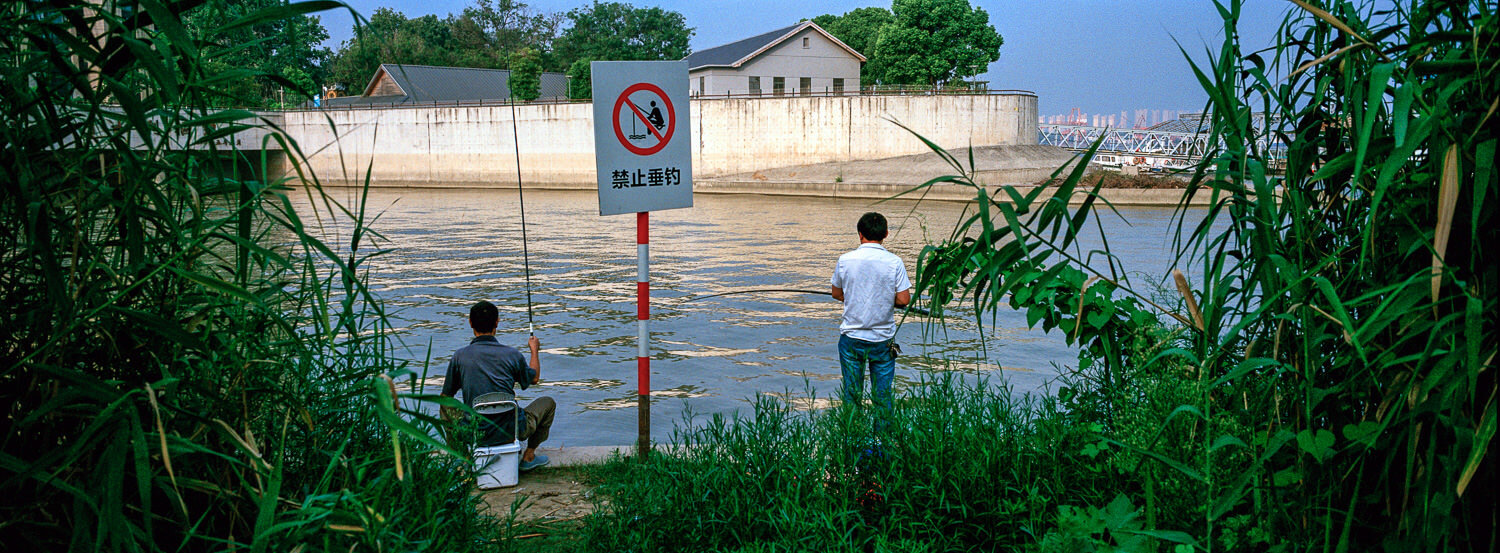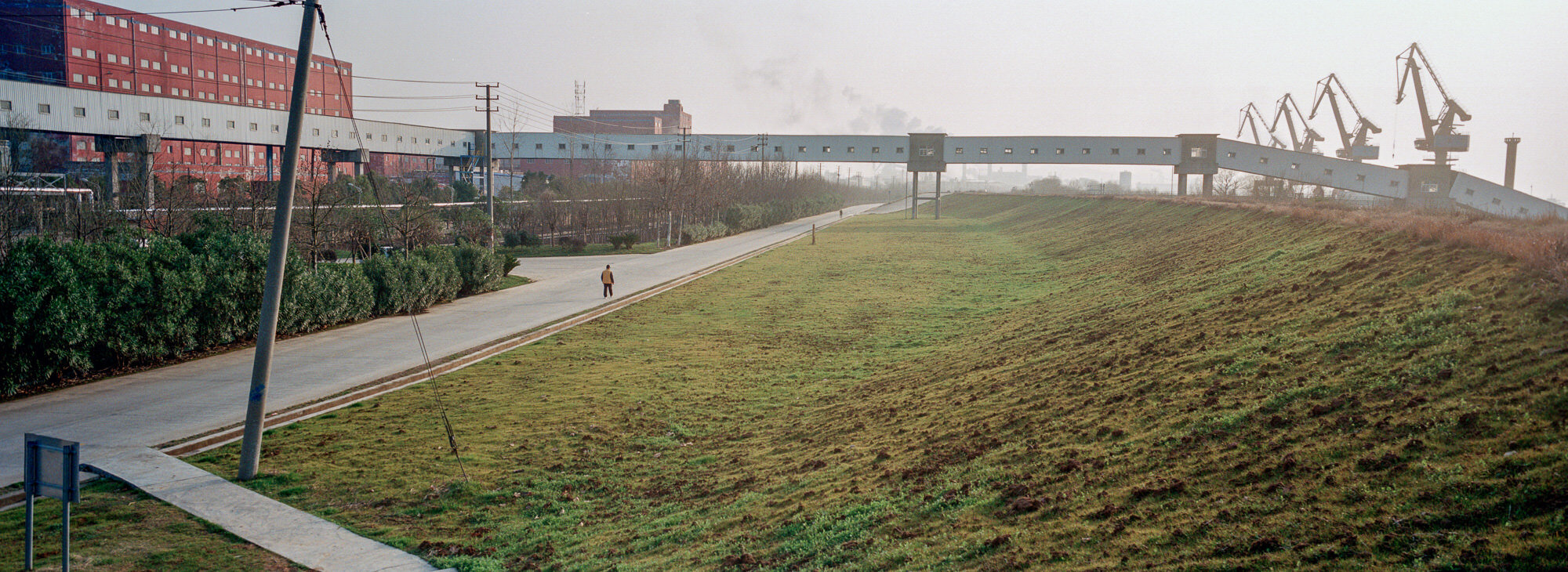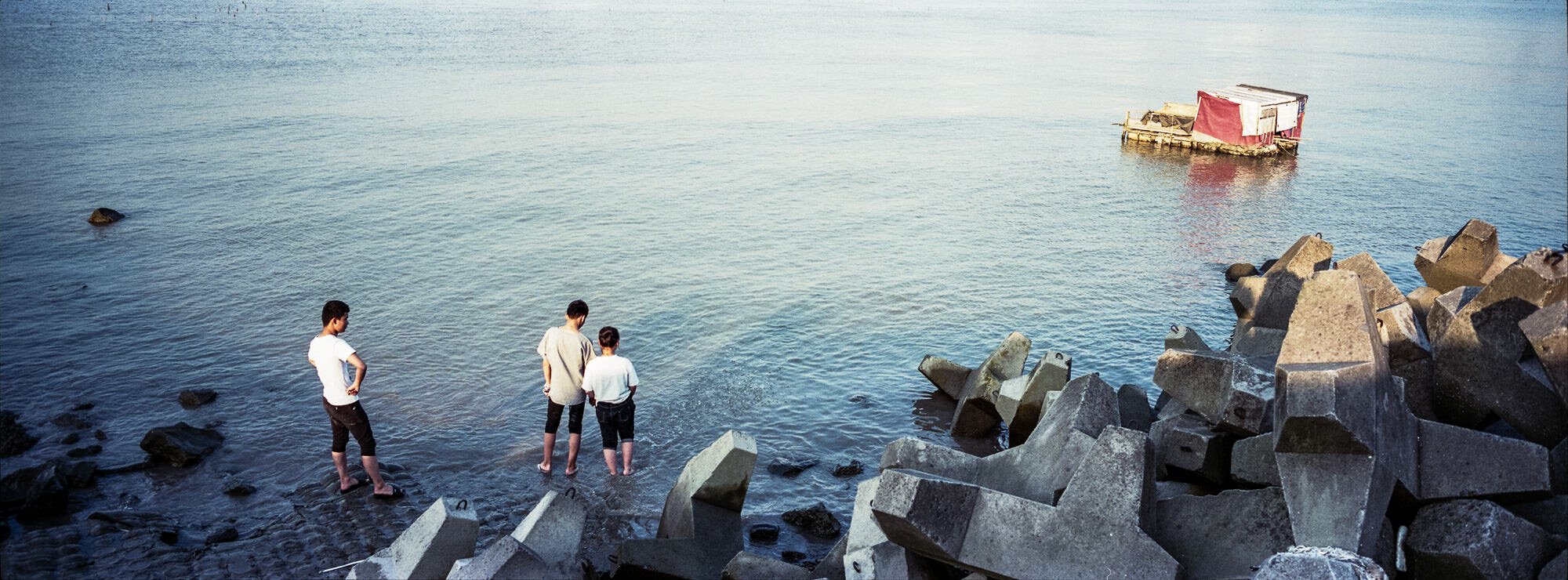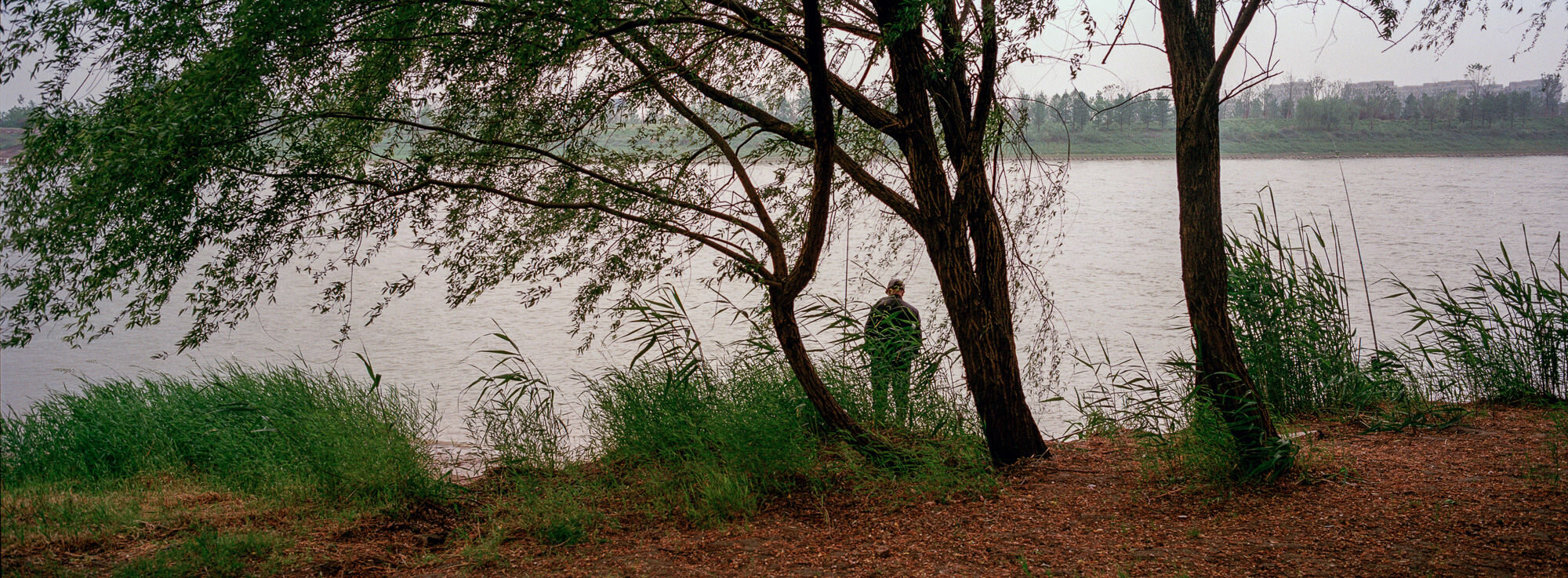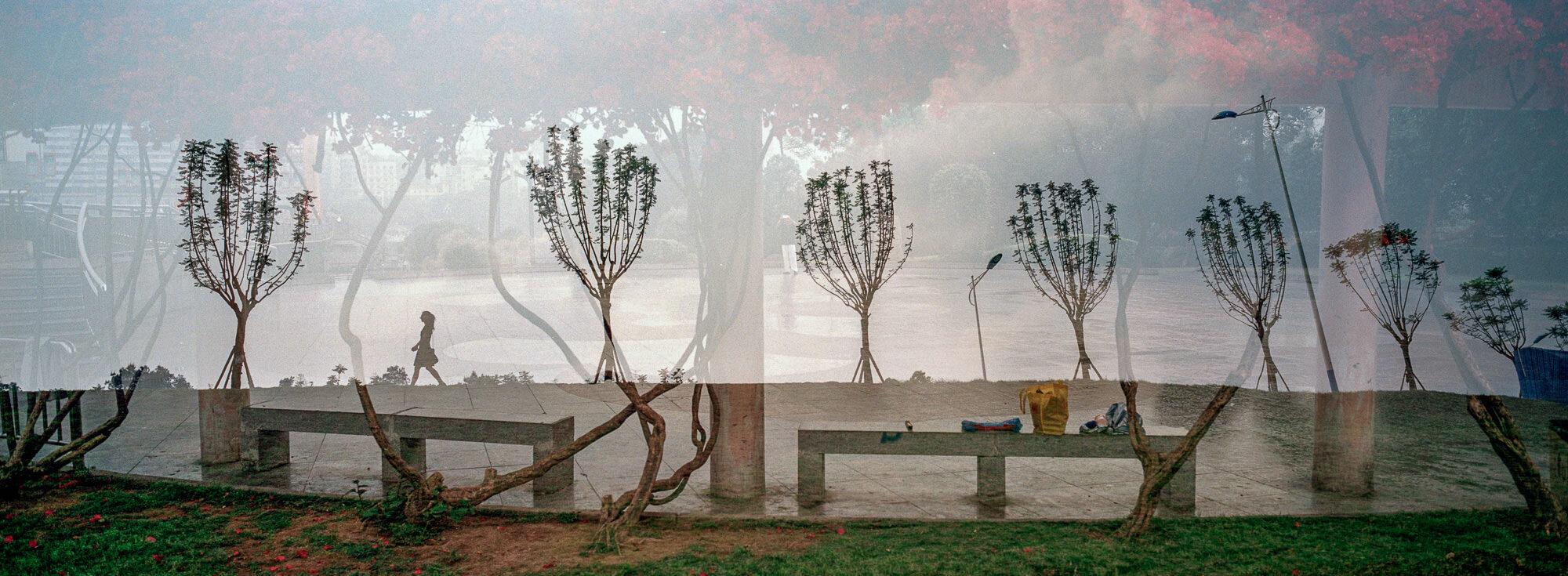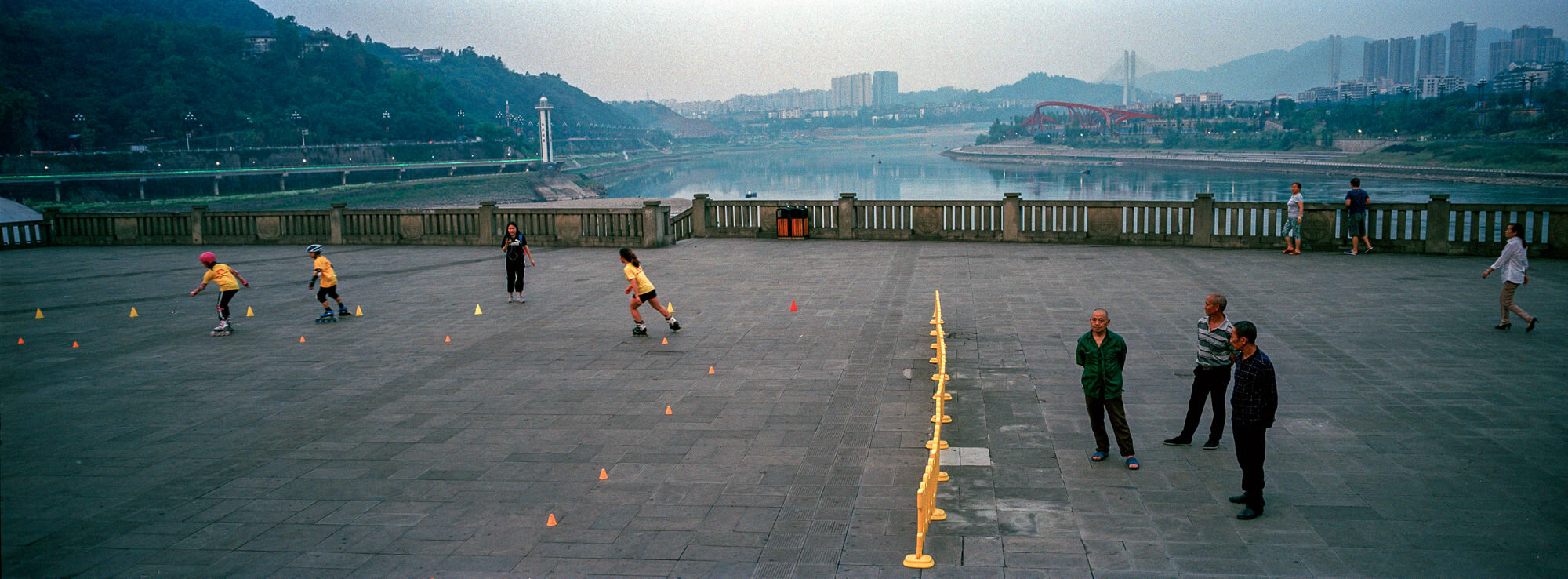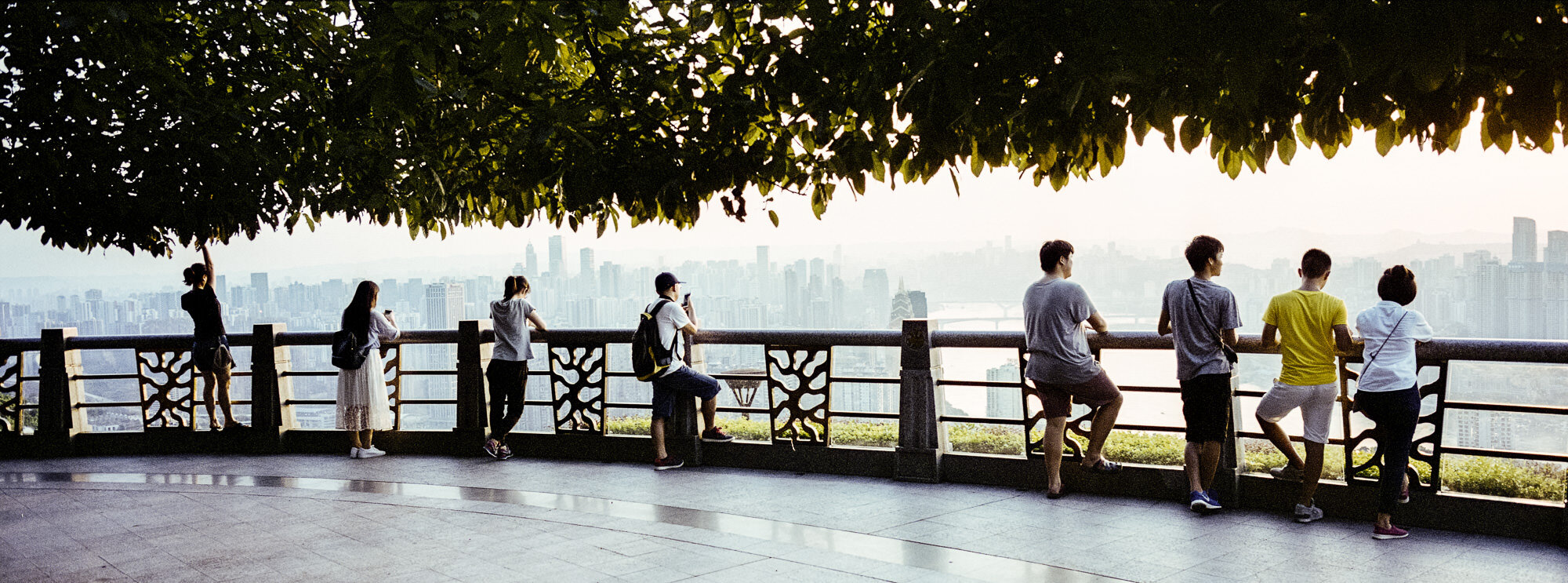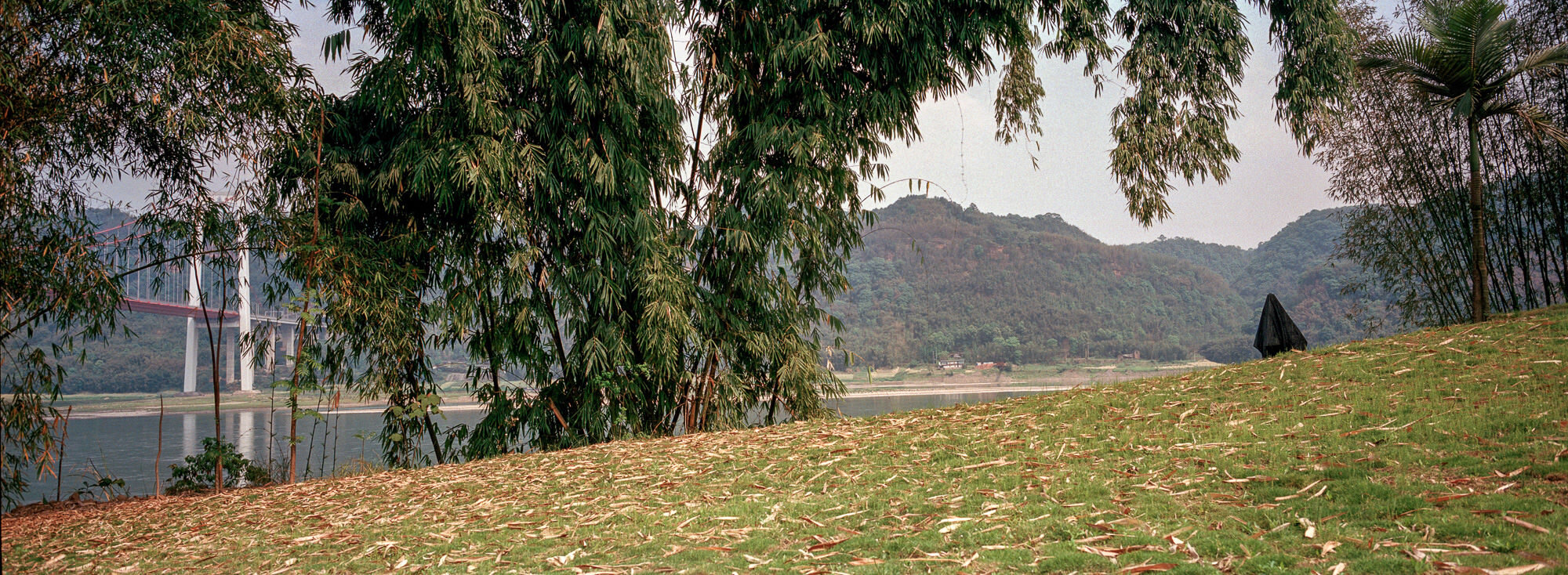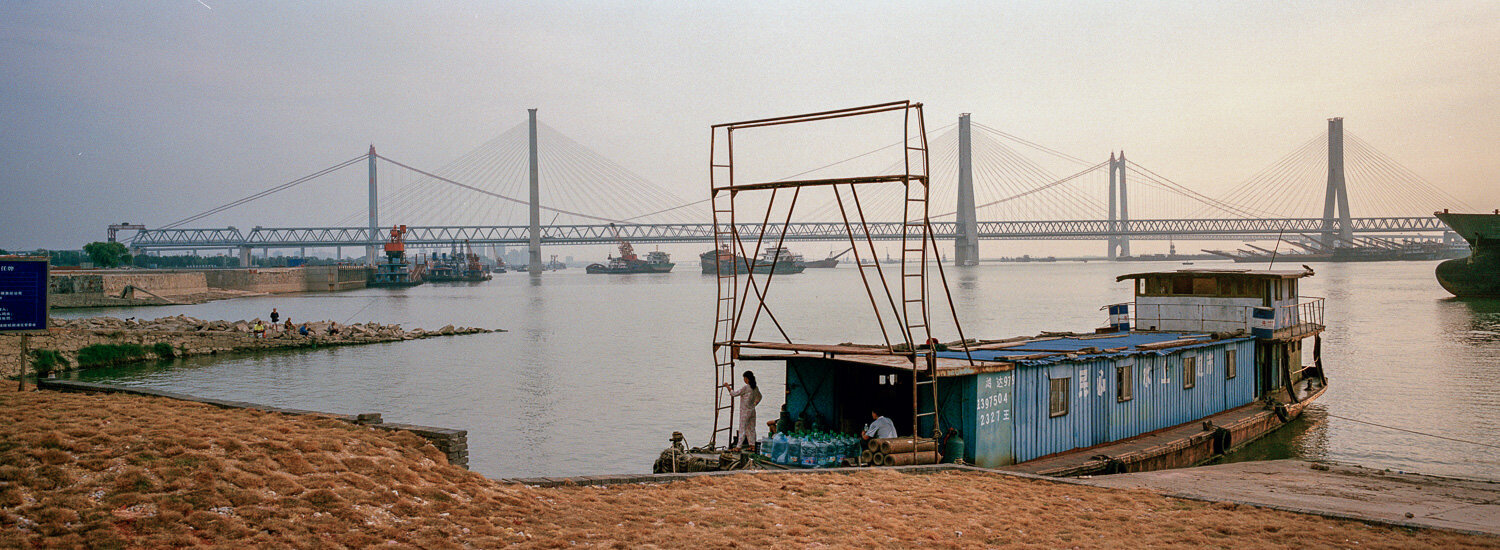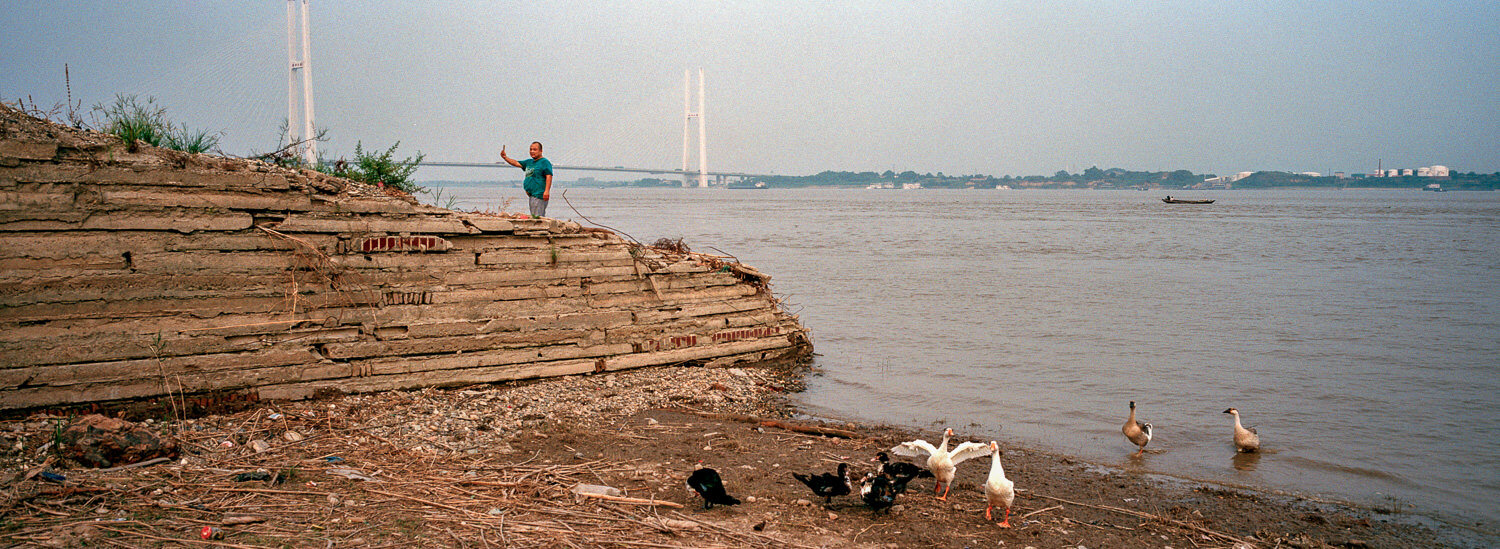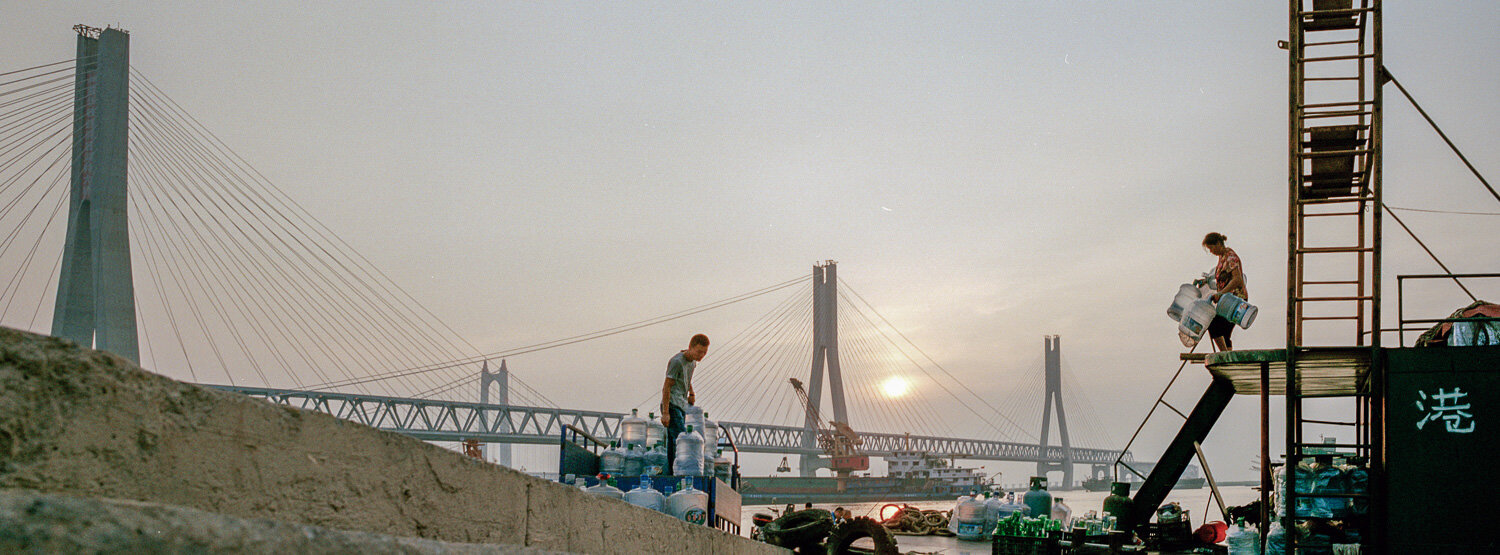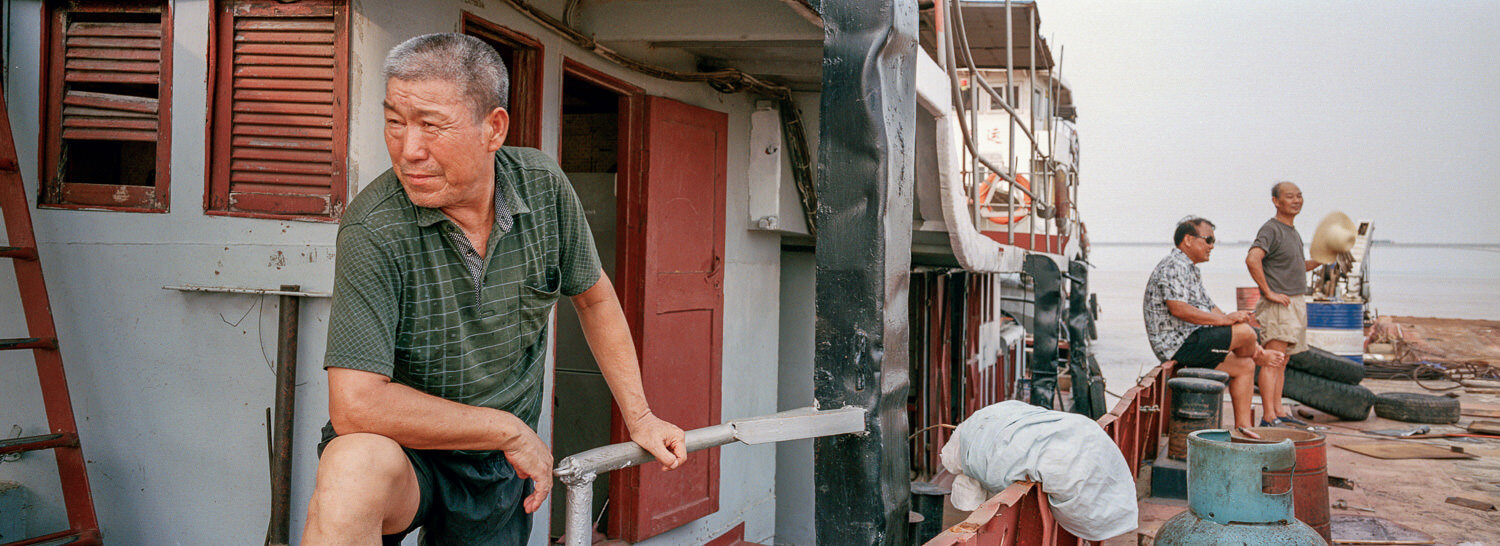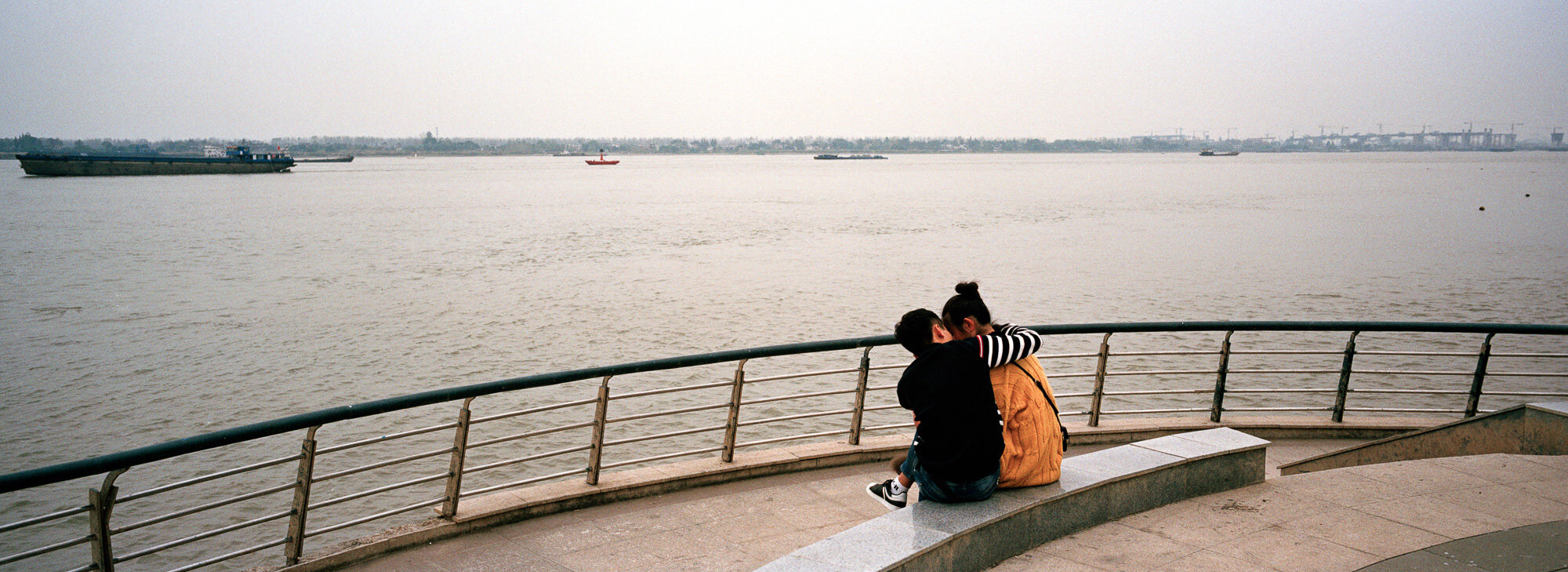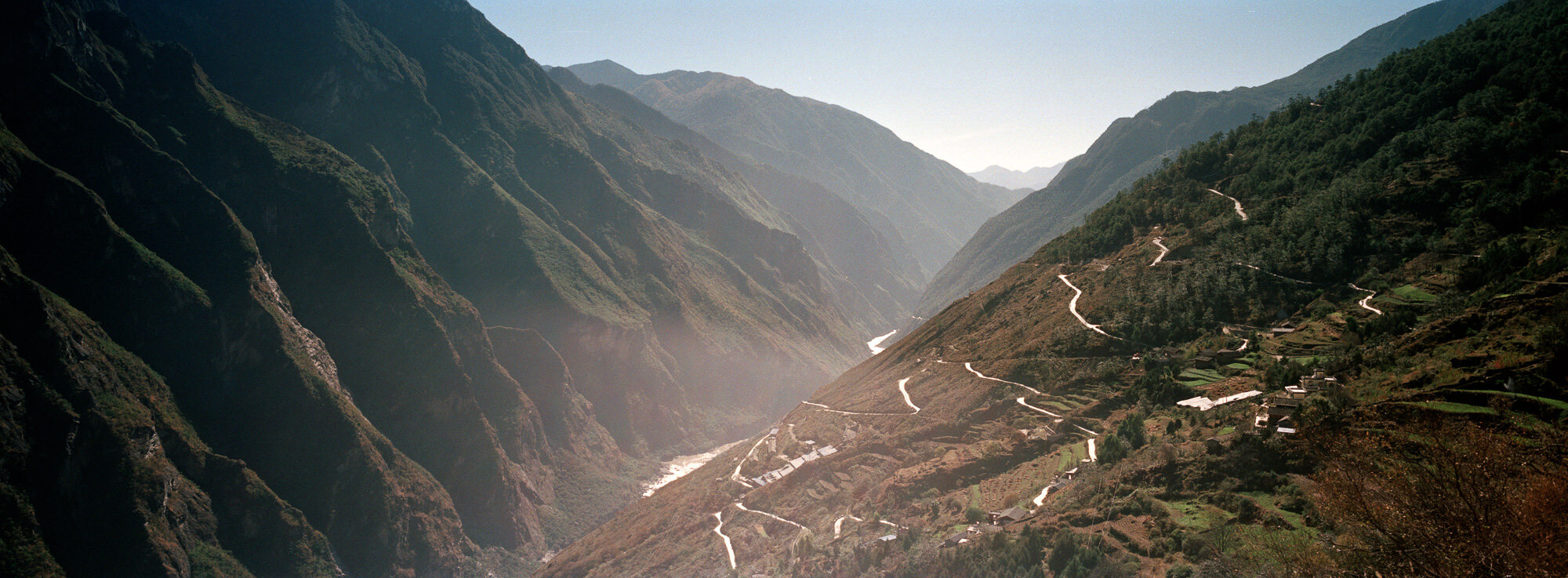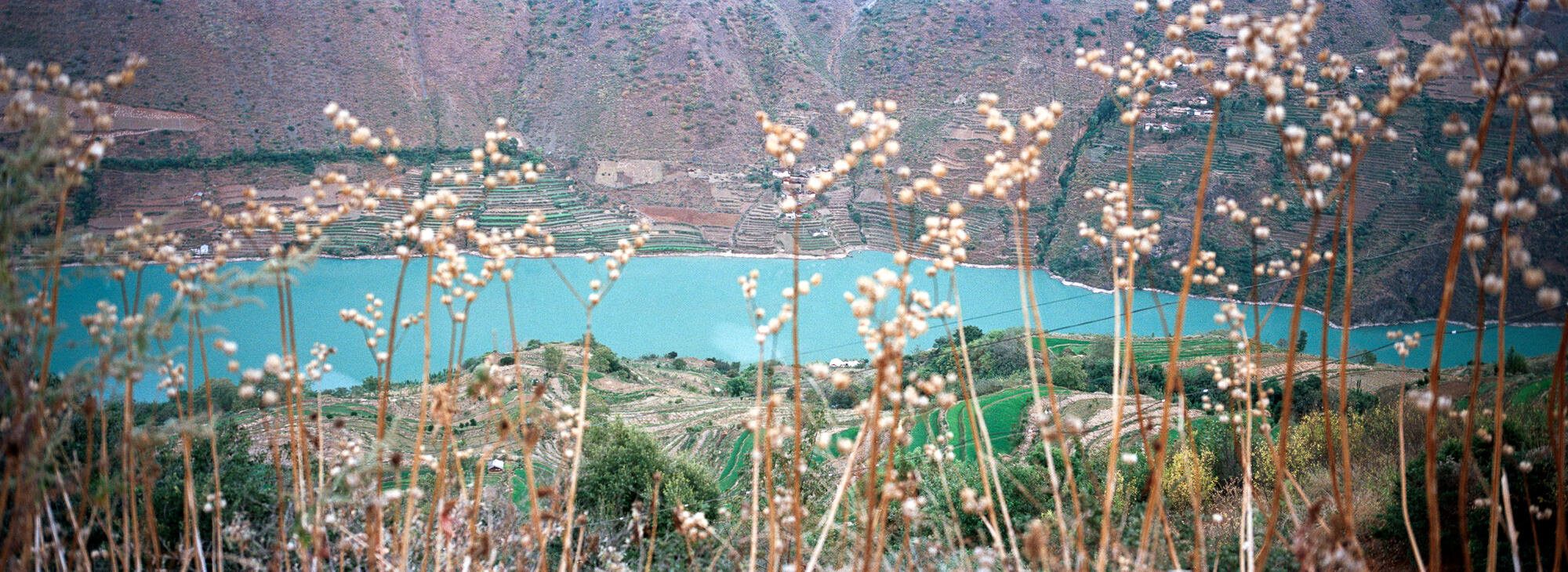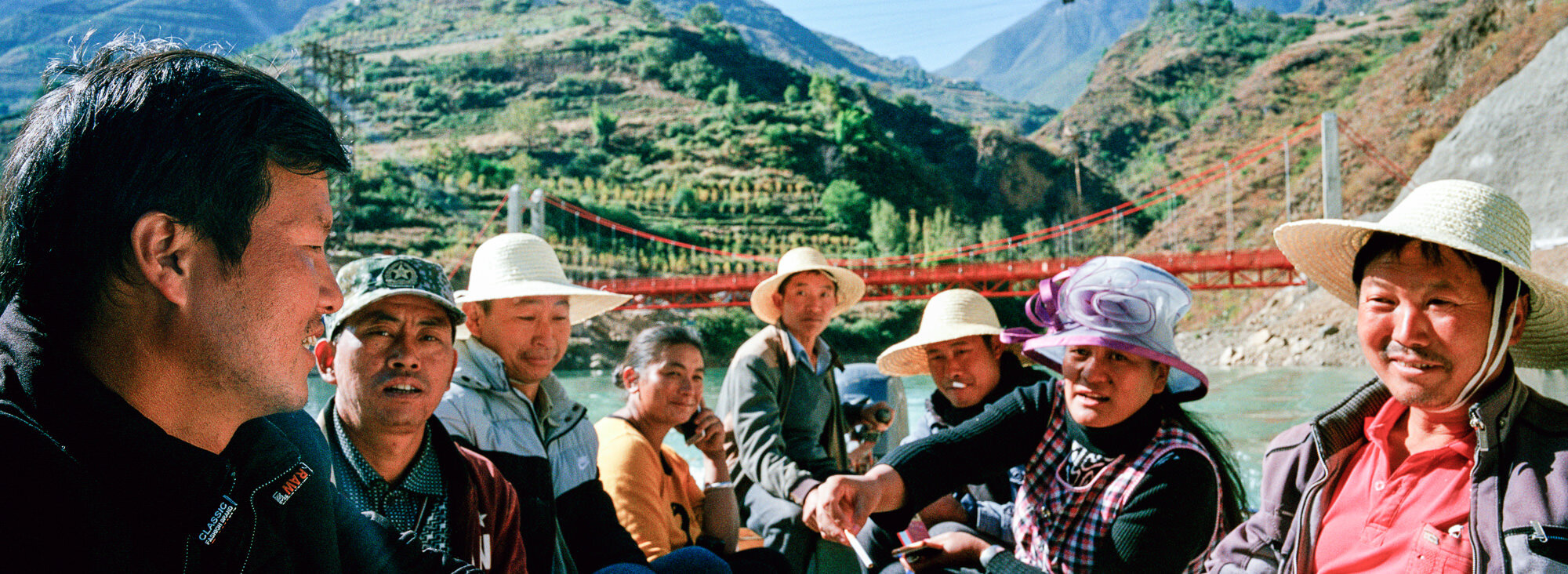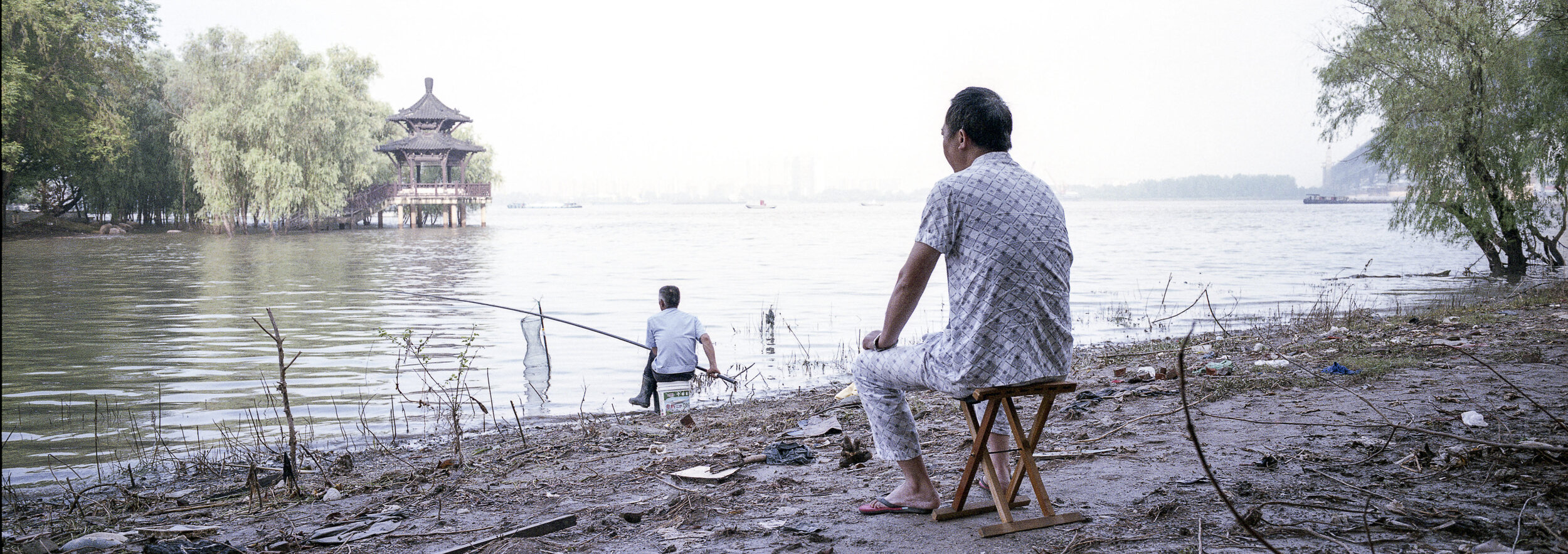Well it’s about time to do another blog entry.
I thought I might as well talk about a project, I’ve either finished, shelved or put on the back burner.
I started photographing the Yangtze River in November 2015 when I got up early one morning in Wuhan and walked along the river’s banks at a park in front of the city’s old Bund, a four kilometre stretch lined with grand old concession area buildings like the offices National City Bank of New York and the Customs House.
I had been brought to the city to shoot an assignment the previous day, but on this occasion, I was just shooting for myself on a Hasselblad Xpan, which would eventually meet its demise when I tumbled into the Yangtze River in Chongqing a couple of years lager, striving for shot that I could only take from inside its waters.
I only shot two rolls of Kodak Portra 400 on that foggy morning. When I got my film back, I thought I was onto something since the river was a recurring motif in my travels within China. It was something I could shoot whenever work brought me to city along the river as well as on the outskirts of Shanghai on my own time. Eventually I’d undertake specific trips to shoot parts of the river I hadn’t covered. I saw the project as a perfect vehicle to see and show the incredible geographic and cultural diversity of China. The river itself could give cohesion to what would otherwise be a seemingly random series of images.
I was inspired to acquire an Xpan after viewing a screening of Spanish photojournalist Francesc Melcion’s work on the Mekong River at the Visa pour l’image photojournalism festival (http://francescmelcion.com ) in Perpignan, France in September 2009. Obviously, the panoramic format was ideal for documenting a river.
I started shooting the series on Portra 400, which is fairly ubiquitous in a few documentary projects that spring to mind like Patrick Wack’s Out West https://www.patrick-wack.com/PROJECTS/Out-West---2016/2017/thumbs or this project by Mustafa Abdulaziz which also has the Portra ‘look’ https://www.theguardian.com/culture/gallery/2019/sep/04/man-environment-global-water-crisis-mustafah-abdulaziz-in-pictures.
There were a few reasons why I opted to shoot the project on Agfa Film Vista 400 instead of Portra 400. The main one is that I originally intended to show the project in black and white so I didn’t need the subtle hues of a pro negative. Also, five or six years ago, Vista 400 sold for CNY 18 (less than 3 US dollars) per roll, which was less than a third of the cost of a roll of Portra 400.
While it didn’t have incredible exposure latitude of Portra, I still had at least a stop of over exposure to play with to bring up shadow detail and the film was versatile enough to under expose by a stop if I had to. I usually just rated it at 200 ASA. This film, now discontinued, was made in Japan by Fujifilm. It’s probably a variant of Superia 400. The other really cheap negative film back at that time was Fujifilm ‘white box’ also known as ‘industrial’. Although it was only meant for sale in Japan, you could still pick up cheap bricks of ten rolls in Shanghai. I shot some rolls of Vista and the plain packaged white box Fujifilm side by side and couldn’t spot the difference.
I’m not sure if it’s an international phenomenon, but since these two films were discontinued they now sell for in China for around the same or more than professional colour negative films like Kodak Porta or Fujifilm Pro 400H and more than mid-price Superia 400 X-Tra (possibly the exact same film as Vista 400), which a bit baffling.
Anyway, over time, I decided to show the project in colour. I liked the chunky grain of the film, which gave it a retro look, but as a consumer film, the colours were a bit too saturated for my taste, so I ended up bringing down the saturation to ‘grade’ it.
The idea was that I would cover the river from its mouth in Shanghai (or the Shengsi archipelago at its very extremity) to either one of two glacial lakes in the Himalayas that are considered its original source. So far, I haven’t made it to the source. The furthest I have ventured is to Tiger Leaping Gorge in Yunnan Province. The river itself officially forms in Yibin, Sichuan Province though. The rivers to south west of this are tributaries. Technically I’ve already photographed the Yangtze in all seven provinces through which it passes.
Not long after I began to toy with the idea of shooting this project, I found that Nadav Kandar had published a book called the Long River (a transliteration of the Yangtze’s Chinese name ‘Changjiang’) back in 2010.
https://www.lensculture.com/articles/nadav-kander-yangtze-the-long-river
Kandar, who is arguably more successful than any current photographer at straddling both editorial and art photography, speaks eloquently in the above link on how he shot the project over three trips in three years. One thing I took note of was his mention of ‘The River at the Centre of the World’ by Simon Winchester. This book, which also documents a journey from the edge of the Yangtze’s mouth in the sea off Shanghai to one of its probable origins in the Himalayas, works on a loose thesis that the journey will be a journey into China’s past.
After I read Winchester’s book - very readable and informative despite the author’s superciliousness - I thought I may as well forge on. Basically, it read like ancient history, such is the drastic change that has taken place in this country since its publication in 1996. Also, since Kandar’s work also pre-dated the river prior to the completion of the Three Gorges Dam, I believed it was worth documenting the river post-Three Gorges Dam.
The thing I perhaps should have considered was that the Yangtze subject had gone cold in terms of as world news. A hot topic would have been something like the Belt and Road Initiative. For some in the art world, Kandar’s work is the last word on the Yangtze.
Although I undertook the project out of personal interest, I have wondered, more than five years and maybe 100 rolls of film or so later whether it was a waste of time. I know I shouldn't be thinking of this since the experience of travelling to capture the images was rewarding in itself. I think the result of the work is worthwhile.
Still I’m a professional photographer so in doing this kind of thing, there is the hope that it will bear fruit. In some senses it has. I was a first place finalist with it in the now defunct Photo District News (PDN) Storytellers competition, a finalist in the Independent Photographer (UK) awards and I was awarded a special prize for highest scoring film capture in the Epson International Pano Awards. I also had a few images published in magazines (most recently in German GEO) and sold a print to a gallery owner, but needless to say I’m quite sure I’ll never recoup my costs of doing this project, nor did I ever expect to.
Apart from the series I entered in the Storytellers competition, the single image that has got the most attention is ‘fake forest’ which doesn’t even have the river in it. Still, I wouldn’t have shot that image if it wasn’t for undertaking this project and in light of that, maybe it was all worth it in other senses. It’s possibly the best photograph I’ve ever shot.
I did plan to show the work in Sydney. It was selected in the general program at the Head On Photography Festival last year, but Covid-19 scuttled those plans. I was kind of relieved when the exhibition was cancelled and my costs refunded due to 541 Gallery closing, since I wasn’t able to attend and the exhibition was an expensive undertaking in itself.
I had some meetings with book publishers at a festival in Arles, France a couple of years ago, but the fact is that getting photography books published is incredibly competitive, which is why so many photographers end up self-funding or crowd sourcing. I ended up printing one frigging enormous coffee table book of 20 images to tote around as a folio in Arles and printed about 30 smaller booklets, which I just gave away to editors and publishers and various people. I think I have one copy of those left.
I even kicked the tyres of completing the project as a PhD, but the combination of having to write in near unintelligible academic jargon and having to adhere to a fairly unworkable ethics framework were some of the deciding factors in not pursuing this.
There are loads of festivals and competitions in which I could have entered this work, but I haven’t. I suppose if I keep taking opportunities to potentially add to the work, I might look to put it out there again. Right now, I’m pretty sure hardly anyone could care less about a photos of a journey down the Yangtze.
So I’ve kind of forgotten that I even shot the project and only got around to editing a web gallery this week. Three shots off that first roll I shot in Wuhan are in my edit here, while most recent one was shot again in Wuhan just two months ago.
I included some double exposures in this edit. Maybe it should have a case of been ‘either/or’ in terms of their inclusion. I don’t mind adding some to the mix. There was quite an element of chance in how they would come out.
The best double exposure of all was an accident when I loaded a roll of film twice (that’s the swimmers in Yichang). For the other ones, I just ripped the end of the film back out after I shot it and then re-loaded it. I did keep in mind that one exposure was background and one for action. Sometimes I would compose two frames split one on top of the other.
I think it was an interesting experiment to see how the double exposures turned out. In the end I think it’s too much randomness and not something I’ll return to. It would be nice to have an Xpan II that allows for double exposure without reloading an entire roll and shooting over it though.
Anyway, here’s a little gallery of outtakes from the larger one I just put online. The first is of a guy washing his clothes in the river on a cold November morning in Wuhan back in 2015. It’s off the same first roll of the project as three others in the larger gallery. Unlike the ones in the main gallery, I haven’t ordered these in rank of distance from the river’s mouth.
More work at www.davetacon.com
